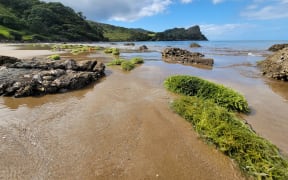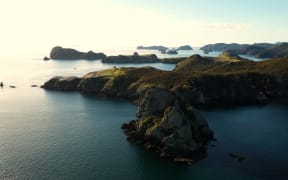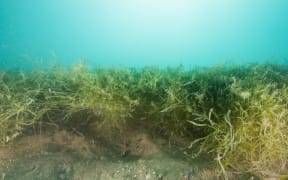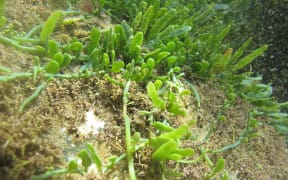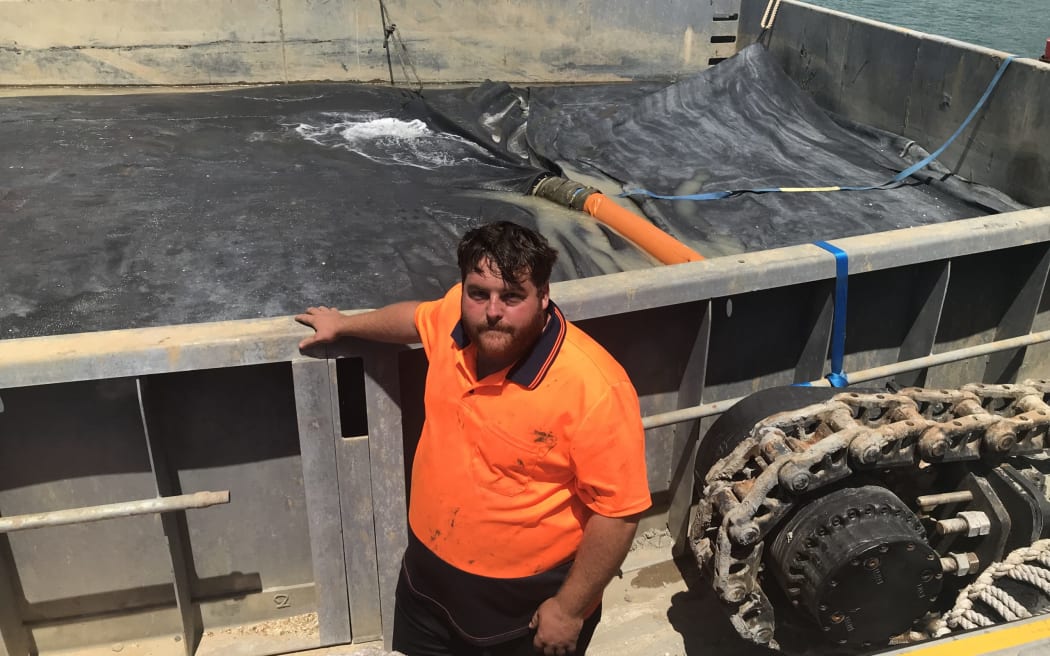
Andrew Johnson with the huge sealed geotech bag on his barge made in Thames slowly starting to fill up with mixed caulerpa, sediment and seawater dredgings from the Omākiwi Cove seafloor. Photo: LDR / Susan Botting Local Democracy Reporter Northland
Decisions on whether to extend New Zealand's first mechanical caulerpa suction dredging trial into the Bay of Islands and beyond will come after its Omākiwi Cove results at the end of February.
The two-week trial began in the Bay of Islands' caulerpa epicentre last week.
Wellington-based Biosecurity New Zealand caulerpa national response manager John Walsh said preliminary trial results were expected in a month. Decisions on potentially extending the joint $650,000 trial were expected soon after, depending on key effectiveness indicators.
Walsh visited Omākiwi Cove via Opua wharf this week to check out the groundbreaking trial in the field for the first time, on the Northland Regional Council (NRC) boat 'Waikare' - along with members of Te Rawhiti based hapū's Ngati Kuta and Patukeha who are have a key role in Northland's caulerpa eradication plans .
The trial's mechanised caulerpa suction dredge has been designed by Bay of Islands' Andrew Johnson, who has a degree in ocean construction from Tasmania.
The government-funded Northland Regional Council (NRC) joint trial is being done together with the Ministry for Primary Industries and Te Rawhiti hapū Ngati Kuta and Patukeha.
Walsh said the mechanical dredging at Omākiwi was of significant interest.
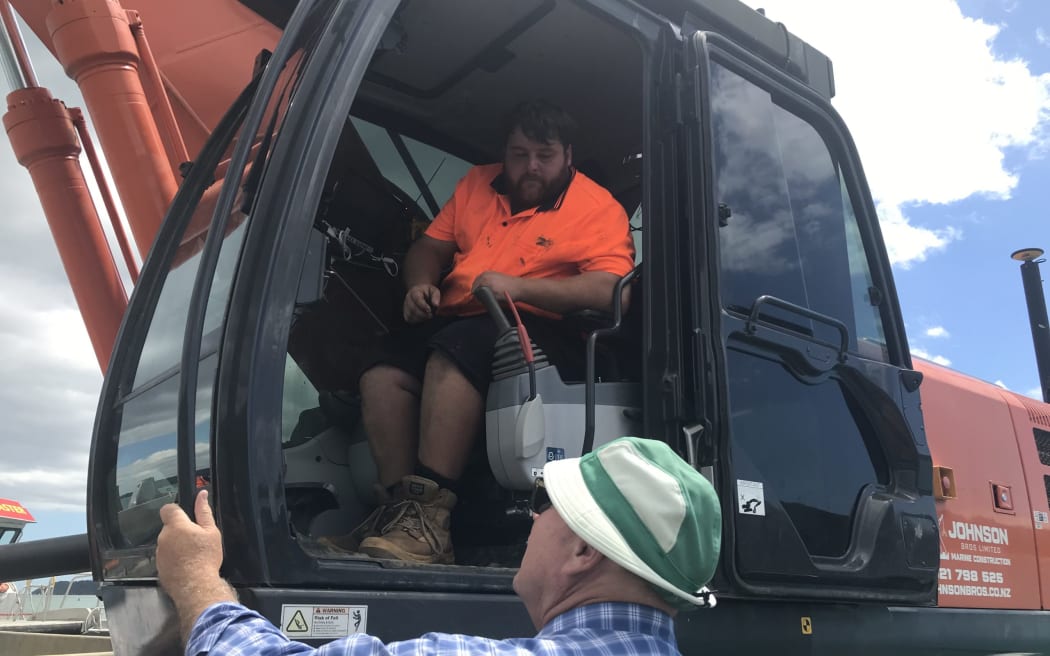
Bay of Islands' Andrew Johnson (in orange) discusses his new mechanical caulerpa dredge design with Wellington-based Biosecurity New Zealand caulerpa national response manager John Walsh at Omākiwi Cove Photo: LDR / Susan Botting Local Democracy Reporter Northland
The government and others impacted by caulerpa were closely watching its outcomes.
"We have been looking for a tool to remove caulerpa at scale," Walsh said.
"There seems to be a possibility of doing that with this tool," he said.
Walsh said there was interest in how quickly the dredging could be done, what its applications were at different depths, how effectively it was removing caulerpa's shallow spreading roots (from which new caulerpa plants also shoot) and whether it could be scaled up to use in other areas of New Zealand.
"What we have seen here (at Omākiwi) today seems to be promising," Walsh said.
Northland Regional Council (NRC) marine biosecurity manager and national marine invasions specialist Dr Kaeden Leonard said the trial was expected to take about two weeks of suction dredging, followed up with robust data analysis, expected to take a further two weeks.
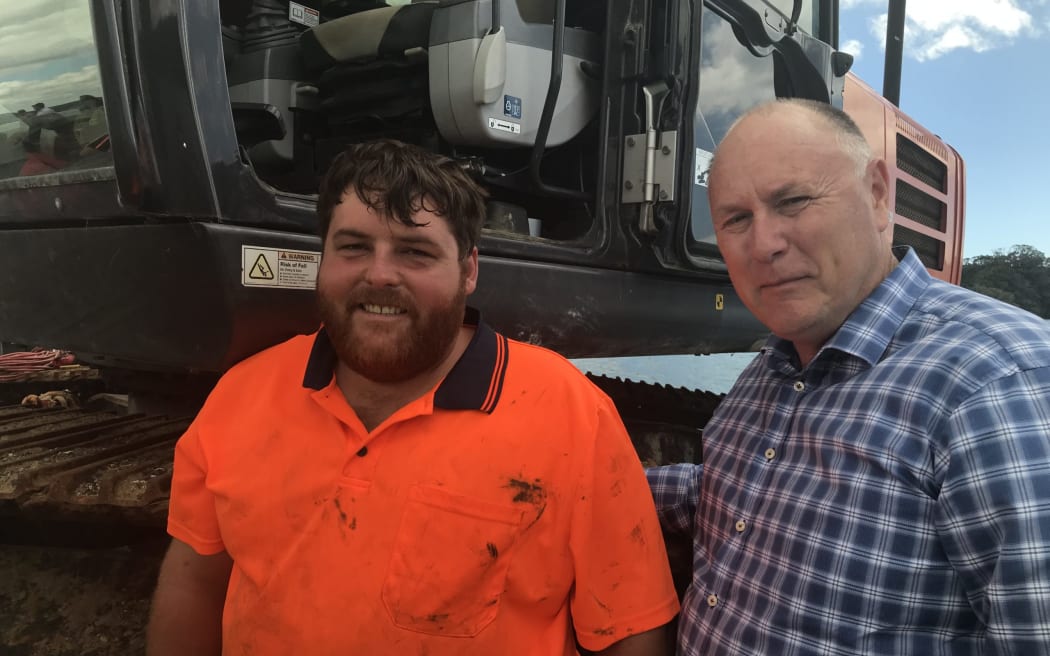
Bay of Islands' Andrew Johnson (left) and Wellington-based Biosecurity New Zealand caulerpa national response manager John Walsh on board the barge at Omākiwi Cove on 30 January. Photo: LDR / Susan Botting Local Democracy Reporter Northland
Caulerpa is being removed from the top roughly 3cm of sea floor across two separate one hectare blocks. It is removed after its shallow spreading roots are first shaken to loosen their stronghold before the whole plant is sucked up a dredge onto a bright red Johnson Bros barge.
Leonard said, if successful, the mechanical dredging could be extended into the Bay of Islands and beyond.
Two separate one hectare blocks of caulerpa are being suction dredged at Omākiwi Cove in the trial - part of about 16ha of caulerpa spread across more than 1000 hectares in the Bay of Islands that are now closed for boat anchoring, fishing and diving in a government ban, backed up by a rahui laid down by Te Rawhiti hapū Ngati Kuta and Patukeha.

New Zealand's first mechanical caulerpa suction dredge in action in Omākiwi in the Bay of Islands. Photo: LDR / Susan Botting Local Democracy Reporter Northland
The mechanical suction dredging is a major step forward in what has until now been the prospect of hand-weeding caulerpa via a diver dragging a heavy suction dredging hose across the sea floor to vacuum up the invasive seaweed.
rnz
"We can harvest oil and gas from 2500 metres under the sea. If we haven't designed something like this to dredge caulerpa we've been doing something wrong."
Johnson told Omākiwi Cove visitors yesterday that technology had been designed to be able to harvest oil and gas from 2500 metres under the sea. Something was therefore wrong, if it wasn't possible to develop a specialised mechanical caulerpa suction dredge for shallower waters.
His caulerpa dredge system is a mix of computer screens, high-tech GPS, lateral thinking, simple Kiwi number eight wire and a number of modifications as the suction dredging proceeds.
